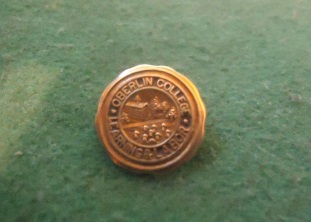The Mysterious Death of Cornelia Sears
Cornelia Florence Sears: 1889-1920
Records of a person’s life are often limited. A researcher
might unearth a birth record, a death record or burial record, and a few census
records or perhaps a marriage record, with little else to flesh out the years
between those few dates and milestones. There’s no official record of the
details that comprise a rich, well-lived life, or an accounting of the
difficulties of a sorrowful life. Sometimes the few records that exist hint at
a dark history, something that has been buried, leaving a mere shadow to
indicate that a tragedy occurred. Such is the case with Cornelia Florence
Sears. What happened to this young woman to cut her life short at the age of
thirty-one? What is missing from the records?
 |
| How are we related? |
Cornelia was born on May 12, 1889 to Samuel Owens Sears and
Sarah “Sallie” Smith Sears. She was the seventh of their eight children, and
grew up on their farm in Muhlenberg County, Kentucky. By 1910, she was living
at home with her parents, her younger sister Maggie, and her brother Edward.
But in the years that followed, her last siblings married and moved away.
Edward left farming to become a mechanic, and Maggie married a local farmer
named Andrew Glenn. Cornelia was left alone with her aging parents—on the 1920
census, recorded on January 15, 1920, she is listed as 31 years old, with no
job and no husband—only her 70 year old father and 69 year old mother as
companions.
Less than six months later, Cornelia was dead. The cause of
death listed on the death certificate was a shock: “Homicide, by firearms”.
Apparently the shot was fired on June 3, and Cornelia lingered for two days, dying
June 5, 1920.
I immediately turned to Newspapers.com and to Google. A
murder in rural Kentucky in 1920 would have been big news in the state. But I
found nothing. Not a single mention of Cornelia, of a murder or attempted
murder, no obituary or funeral notice—nothing! That is beyond peculiar.
I found Cornelia’s grave on Findagrave. The headstone lists
her by her nickname of “Noma” Sears. The inscription at the base of the stone
reads: “How Desolate Our Home Bereft of Thee.” Obviously her parents were broken-hearted.
So what happened to Cornelia Florence Sears? Why did her
community remain silent after such a tragedy? I wonder if the “homicide” might
have been either a horrible accident or, even more tragic, a self-inflicted
homicide—suicide. There is no record of an arrest, or mention in the area
newspapers of a crime. So perhaps there was no actual crime.
Whatever the real story behind the gunshot that took
Cornelia’s life, it will remain hidden in the shadows, as her family and
friends apparently wished.
















